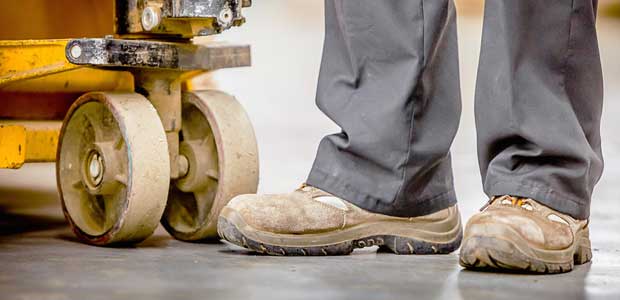
Burnout Can Impact Workers from Head to Toe
Providing workers with proper foot protection should be a moral obligation.
- By Dr. Kevan Orvitz
- Apr 01, 2022
Over the past two years, the global Covid-19 crisis has continued to teach us about ourselves, communities, workplace and humanity. Despite the unpredictable obstacles thrown at every industry and workplace, frontline workers continue to be a consistent source of reliability and strength for every community.
Entering 2022, it was abundantly clear that successful companies must be proactive to retain employees and boost morale. Understandably, frontline workers are fatigued and burnt out. They are working longer hours, in addition to heightened demands at home.
According to the World Health Organization, workplace stress that persists without successful management can lead to burnout syndrome. It is broken down into three categories:
- Feeling exhausted
- Increased negativity or emotional distance from one’s job
- Reduced productivity
Year over year, since the beginning of the Covid-19 pandemic, the American workplace has seen increased burnout. Prior to the pandemic, burnout was a hot topic seen in numerous industries, but now more than ever, it is jeopardizing the future of big and small businesses across the country.
Hazards Ahead
One thing has become crystal clear in the Covid-19 pandemic: expect the unexpected. Knowing that the road ahead is unpredictable can give managers and business owners the foresight to work proactively to keep employees safe, engaged and productive.
First, it’s important to analyze the role and daily procedures each employee undergoes. Is their job repetitive? Does it require lifting? Are they standing all day on hard and uneven floors? If their role requires increased physical action, are they being provided with the care, support, and comfort to do their job safely and efficiently?
Analyzing the tasks of each worker can help management identify ergonomic hazards experienced in their workforce. For example, force is a common ergonomic hazard. Imagine a delivery driver, each stop requires lifting various sized packages. These heavy external loads generate internal muscular contractions which lead to high levels of stress within the joints and place greater compression on the spine. Sedentary workers still experience this hazard in a manner that everyone can relate to. Prolonged sitting increases stress within the spine, and simply walking on the ground leads to an exertion of force that is, based on our footwear and reactive forces.
These examples highlight two different work environments dealing with the same hazard: force. On the surface it appears that this ergonomic hazard is just a fact of life. However, surveys show that insoles can provide comfort and help reduce pain and fatigue. Offering employees insoles with improved shock absorption can help eliminate the detrimental impact of force. Anti-fatigue insoles work to absorb the downward force of gravity, as well as external load forces, minimizing strain on the joints and spine.
Feeling Awkward
Experiencing an awkward moment can be a fleeting discomfort. However, an awkward posture can be a long-term ergonomic disaster. Individuals working in an awkward posture forgo working within their body’s neutral position. Instead, they find themselves in a posture which requires more muscular effort and provides less functional stability at the joints. As awkward postures continue, feet can become fatigued leading to pronation, allowing joint stress at the knees, hips and lower back region to grow.
Much like an awkward moment, awkward postures are hard to completely avoid. If these postures are inevitable, it’s important to protect employees from harm.
Increasing support through insoles will boost the neutral arch of the feet, reducing pronation and anterior tilting of the pelvis, caused by fatigue. It’s critical that employees receive individualized support, based on their arch type, to ensure maximum efficacy.
The pandemic has shifted from sprinting towards a finish line, to living in a marathon of ever fluctuating change. Frontline workers have been left to discover a new balance within their lives, regardless of the increased physical and emotional stress brought forth by the pandemic. Providing these dedicated workers with proper foot protection should be a moral obligation to businesses. Furthermore, it’s an opportunity to increase employee engagement and satisfaction. Improving foot protection through enhanced support and comfort demonstrates a company’s core values and shows employees that their health and safety is the greatest priority.
This article originally appeared in the April 2022 issue of Occupational Health & Safety.